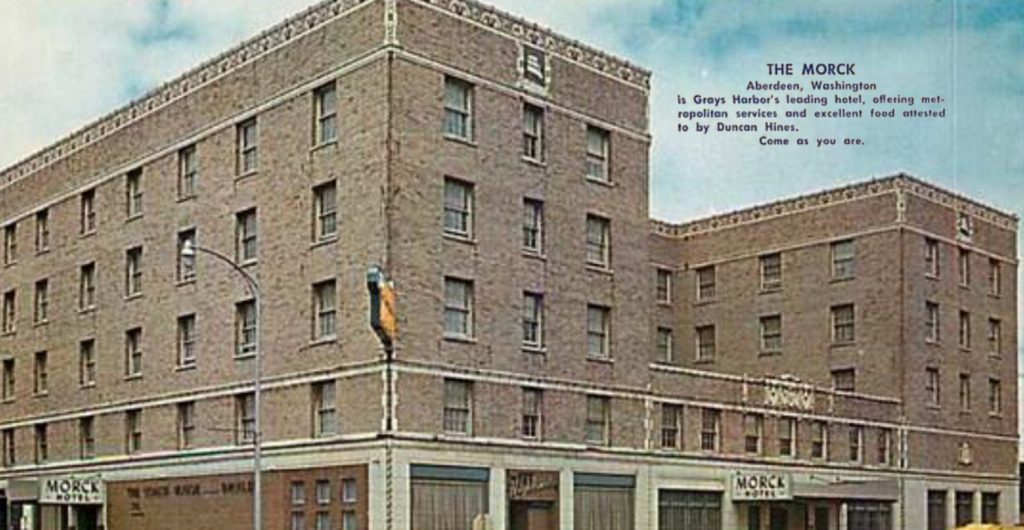Diving Deeper: Finding Out More About Building 9 and the Morck Hotel
Building 9 is not where the Air Force stores old flying saucers, it is a housing rehabilitation project proposed by Mercy Housing. Here is a description of the project:
Building 9 will offer 148 apartments for working families and small households in the historic former Naval Air Station barracks. The project is located in the beautiful 350-acre Magnuson Park on Lake Washington with proximity to many resources including the Magnuson Community Center and Sand Point Elementary School. The adaptive reuse of this vacant building will preserve the exterior and key historic interior elements with an emphasis on energy efficiency resulting in beautiful, comfortable and affordable housing.
In addition to the affordable housing, a community center, computer lab and gathering spaces for residents will be complemented by an early childhood education center operated by Denise Louie Education Center and a Neighborcare health clinic. MHNW will provide a full suite of resident services with an emphasis on health and wellness, out of school time for youth, financial literacy and housing stability.
I’ve written and talked about the project before and I’ve pointed out that it’s current price tag is 148 units for $73,000,000 or about $493,243.24 per units. For scale, consider that the passed and then repealed tax on jobs would have raised about $47 million per year, about two-thirds of the cost of this one project. Another stick to use would be my analysis of housing on the Peninsula where over the last ten years housing paid for by the Housing Trust Fund averaged about $120,000 per unit. For $73,000,000 that would mean about 608 units in Grays Harbor County, enough to reach more than 25 percent of the 2,000 units local activists are calling for there.
In case you missed it, housing is a crisis in other parts of the state. Here’s River Camp along the Chehalis River.
There are some weird irregularities in the sources and uses of the project in the Consolidated Funding Application (CFA), the catch all that allows non-profits to apply for funding from multiple agencies with one form. Here’s the sources and uses digested and you can see the full CFA at the page I created here.
| Sources | |||||
| Building 9 South – 4 Percent | |||||
| Permenant Tax-Exempt Bonds | 10% | $6,032,000 | |||
| City of Seattle | 13% | $8,047,467 | |||
| Department of Commerce | 9% | $5,750,000 | |||
| Deferred Developer Fee | 1% | $350,000 | |||
| Historic Tax Credit | 11% | $6,608,217 | |||
| Iinterest | 0% | $56,667 | |||
| GP Contribution | 0% | $100 | |||
| Total | 44% | $26,844,451 | |||
| Building 9 North – 9 Percent | |||||
| City of Seattle | 7% | $4,075,481 | |||
| Department of Commerce | 6% | $3,950,000 | |||
| Deferred Developer Credit | 1% | $900,000 | |||
| Historic Tax Credit | 7% | $4,117,086 | |||
| Interest | 0% | $38,928 | |||
| GP Contribution | 0% | $100 | |||
| Total | 21% | $13,081,595 | |||
| Expected 4 Percent Equity | 16% | $10,013,775 | |||
| Expected 9 Percent Equity | 15% | $8,982,482 | |||
| Total | 31% | $18,996,257 | |||
| Special State Appropriation | 4% | $2,500,000 | |||
| Total Sources | 100% | $61,422,303 | |||
| Uses | |||||
| Acquisition Costs | 0% | $45,000 | |||
| Construction | 81% | $50,565,796 | |||
| Soft Costs | 12% | $7,221,545 | |||
| Construction Financing | 2% | $1,353,597 | |||
| Permanent Financing | 1% | $483,165 | |||
| Capitalized Reserves | 1% | $668,822 | |||
| Other Development Costs | 3% | $1,852,478 | |||
| Bond Related Costs (4 Percent Bonds) | 0% | $250,000 | |||
| Total | 100% | $62,440,403 | |||
| Gap between Sources and Uses | -$1,018,100 | This difference is noted on the 6A Sheet | |||
| Note: Page 7A of the CFA Form shows a category called “Bridge Financing” with an amount of $30,956,597 for a “Construction Loan.” | |||||
So I asked Mercy Housing for answers to some questions about their CFA:
Hello Alisa,
You’re listed on the CFA for the building project and I thought I’d start with you on these questions (although any light that can be shed by people in the cc is welcome as well).
- Why is the public figure stated as $73 million for this project but the total development cost on the CFA is $62,440,403?
- What accounts for the difference between 6A and 7A in terms of sources and uses? The gap between the two is $1,018,100. Is that amount coming from somewhere else?
- There is a construction loan shown as bridge financing on 7A but that isn’t added into the sources total, can you explain that?
- Has the “special appropriation” been made? Is that coming through the Housing Trust Fund or is that in the recently passed Capitol Budget? I can look around for it, but if you have that history handy I’d appreciate it (when it was made, who sponsored etc)
I apologize for such elementary questions but I am reviewing some of the CFA’s we disclosed and I just want to be sure I get my figures correct.Thank you very much!Roger–







